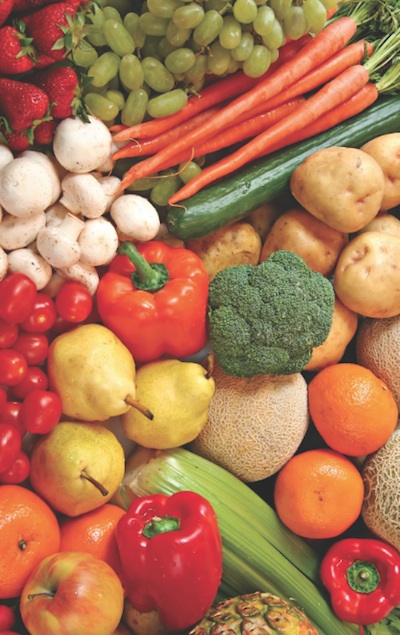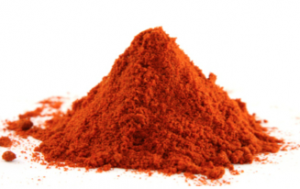The Skinny on Antioxidants — Part 1
Author: admin
Everyone wants great health.
Whether you are male or female, with or without children, young or in your golden years, feeling healthy and energetic are what we all desire in life.
Without great health, it’s difficult to truly enjoy life. From over 35 years as a holistic health educator, I know for one thing for certain: Prevention is the key to high-level wellness. We must choose to be proactive and take care of ourselves — which includes consuming lots of antioxidants.
Women usually take better care of themselves than men from a younger age with pap smears. Today, it’s essential for all of us to take loving care of ourselves. It’s not just one thing, like diet, that supports health, although that’s a big one. It’s a combination of factors, including exercise, stress reduction, ample sleep, a healthy, natural-foods diet, and the right nutritional supplements such as vitamin D and antioxidants.
If you’re eating a poor diet, fraught with unhealthy fats, white sugar and white flour products, and processed foods, then you’re not going to maximize the benefits of exercise and you’re certainly not going to optimize your energy, bone density, and lose weight.
Antioxidants
From decades of research in nutrition and healthy living, I understand the importance of getting enough antioxidants in our diet, whether from food sources or supplements. To help you appreciate their integral role in being healthy, here’s
a quick course in Antioxidants & Free Radicals 101.
 A free radical can be defined as a toxic, unstable molecule that attacks and steals electrons from other molecules. Now these other molecules could be enzymes; or they could be critical proteins within the cell; or they could even be our DNA. They inflict damage in and on the cell.
A free radical can be defined as a toxic, unstable molecule that attacks and steals electrons from other molecules. Now these other molecules could be enzymes; or they could be critical proteins within the cell; or they could even be our DNA. They inflict damage in and on the cell.
Besides inflicting this health- and life-threatening damage, they also trigger chain reactions. In other words, we can have a tsunami of free radicals stealing electrons from our cellular parts. This causes the cells to become dysfunctional and die, which leads to myriad health problems. Some of these include inflammation, heart disease, autoimmune disease, cancer, and diabetes, just to name a few. Put simply, the decline in one’s health often begins with the free radical.
The damage that free radicals cause to our cells is called oxidation. An antioxidant is a substance that stops free radicals from causing cellular damage — hence the name antioxidant. Lucky for us, scientists have discovered a group of natural nutrients that we now know will neutralize and mop up these free radicals. These are the health enhancing antioxidants.
Most antioxidants, such as vitamin C, vitamin E, and others can usually only handle one free radical at a time. But there’s one antioxidant that can handle multiple free radicals simultaneously and multiple types of free radicals. It’s called Astaxanthin, and in the arena of nutritional science, it’s known worldwide as the ”King of Antioxidants.”
Astaxanthin
Astaxanthin is a blood-red plant pigment that comes from the same carotenoid family as beta-carotene, lycopene, and lutein. Because astaxanthin can handle different species of free radicals and can handle multiple free radicals simultaneously, it is revered as the most powerful antioxidant on our planet earth. And it comes from nature, too.
 Over 500 scientific studies have been conducted on this gem of nature. The International Carotenoid Society does excellent work on looking at different carotenoids, producing excellent data and a plethora of information on astaxanthin. In one of these reputable studies comparing astaxanthin to other well-known antioxidants, the results were eye-opening. Astaxanthin was found to be 6,000 times stronger than vitamin C, 500 times stronger than vitamin E, and 2,000 times stronger than resveratrol and quercetin. Not only that, but vitamin C and vitamin E become exhausted after handing one free radical, and they cannot go on to grab another free radical. And sometimes these depleted antioxidants proceed down the line and become pro-oxidants. In other words, they can actually “switch teams” and become a free radical itself, which is harmful.
Over 500 scientific studies have been conducted on this gem of nature. The International Carotenoid Society does excellent work on looking at different carotenoids, producing excellent data and a plethora of information on astaxanthin. In one of these reputable studies comparing astaxanthin to other well-known antioxidants, the results were eye-opening. Astaxanthin was found to be 6,000 times stronger than vitamin C, 500 times stronger than vitamin E, and 2,000 times stronger than resveratrol and quercetin. Not only that, but vitamin C and vitamin E become exhausted after handing one free radical, and they cannot go on to grab another free radical. And sometimes these depleted antioxidants proceed down the line and become pro-oxidants. In other words, they can actually “switch teams” and become a free radical itself, which is harmful.
Astaxanthin never ever becomes a pro-oxidant — never becomes a free radical. This is one of the reasons why we need to take vitamins, supplements, and antioxidants on a daily basis because we deplete our reserves.
In a recent, well-researched article featured in the Wall Street Journal, it mentioned that besides exercise, ample sleep, losing weight and a healthy diet, Hawaiian Astaxanthin supports the body’s normal inflammatory response. In other words, it’s the ideal supplement to take for overall health, including the reduction of Inflammation.
Astaxanthin can be obtained from a few different sources, including microalgae, fungi, krill, shrimp, red trout, and salmon. Of these, the microalgae, called H. pluvialis, is the most potent, and the Hawaiian Astaxanthin from the Kona Coast of Hawaii from Nutrex-Hawaii is the one used in most of the studies because it is the best.
Find out how to get a FREE copy of my popular, full color, 95-page eBook entitled The Curative Kitchen, click the Nutrex-Hawaii link, above.
In Part 2 of this series, I will cover more details about astaxanthin, why it deserves the title of “King of Antioxidants,” how to take it, how many milligrams I take and recommend daily for different health issues, and why it should be the natural supplement of choice for heart health, inflammation, cognitive and neural protection, protection from the sun, joint and muscle health, chronic pain, and eye and vision support.
For more information now on Astaxanthin, visit SusanSmithJones.com or my Hawaiian Spirulina Pacifica Bioastin Astaxanthin blog article.
Listen to my audio broadcast, “Is Inflammation Getting the Best of You?” to learn why the Hawaiian Astaxanthin the best anti-inflammatory.
Receive a GIFT COPY of my Quick Reference Natural Remedy Guide for Common Ailments (includes over 90 health conditions, ailments and issues.
